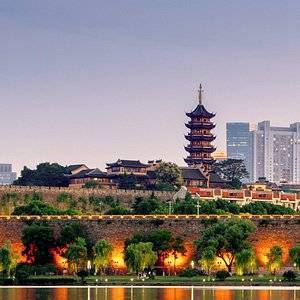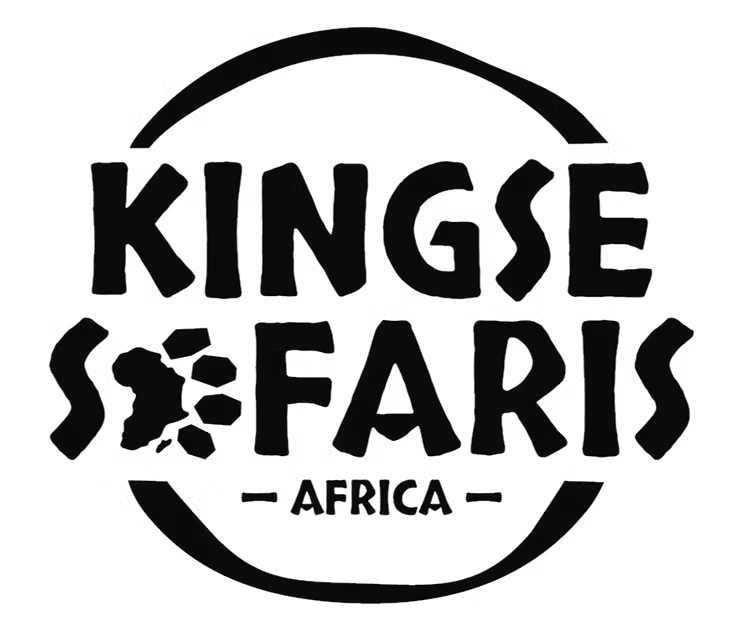Kenya
Tsavo West National Park
Dramatic landscapes and unique wildlife encounters await in Tsavo West.
Tsavo West National Park is a stunning combination of rough topography, volcanic landforms, and rich fauna. While sightings may require patience, the rewards include Big Five encounters, lush oases such as Mzima Springs, and spectacular views of Kenya’s untamed nature.
Area
9,065 sq km
Established
1948
Location
Southeastern
Altitude
200 – 1,800 m
A rugged wilderness shaped by lava, rivers, and roaming giants.
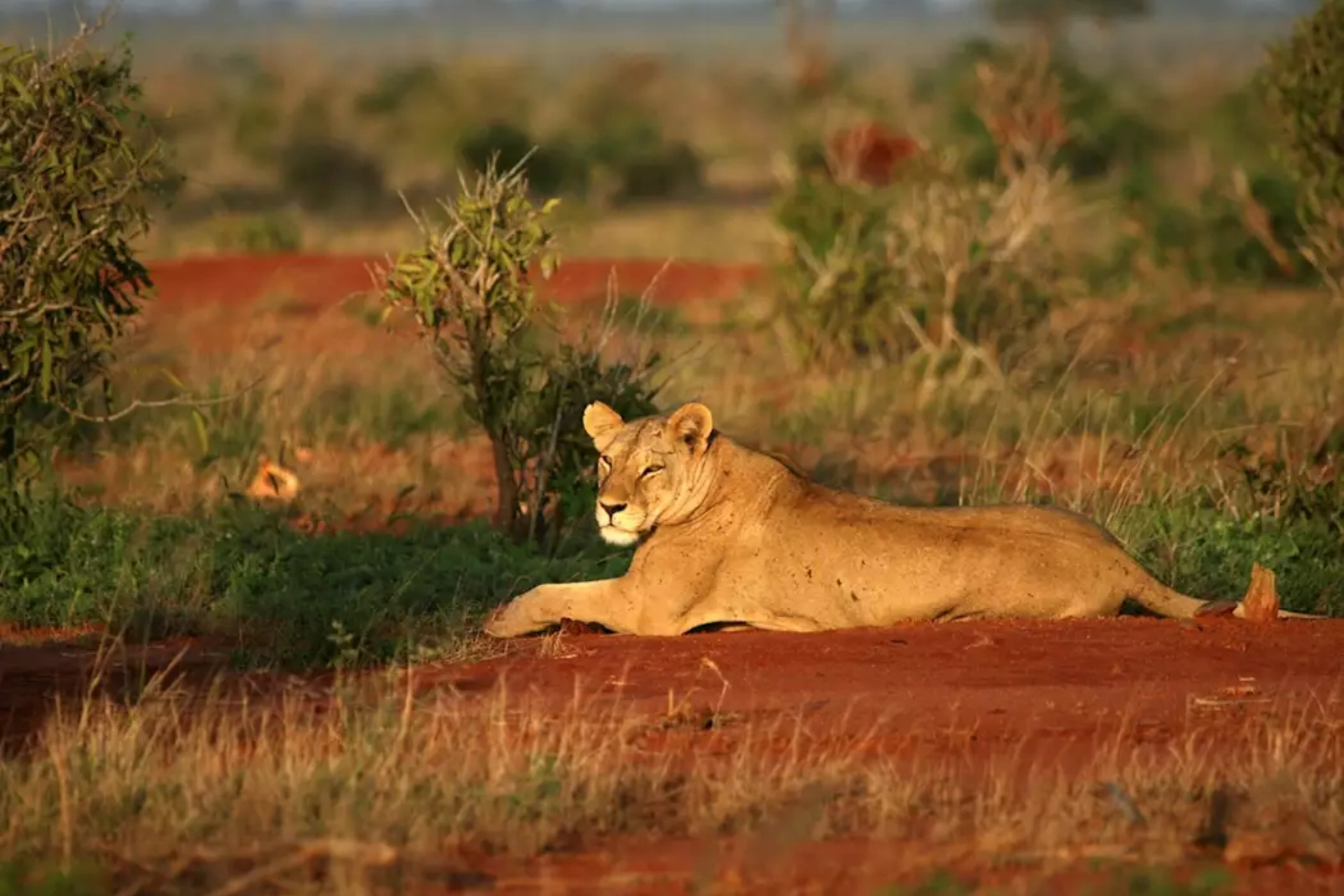
Mzima Springs, a crystal-clear oasis, offers rare underwater viewing of hippos and crocodiles, while the Ngulia Rhinoceros Sanctuary provides a protected haven for endangered black rhinos.
Located near the Tanzanian border and Kenyan coast, Tsavo West is ideal for combining a wildlife adventure with a beach escape. Its mix of scenery, wildlife, and unique geological features makes it one of Kenya’s most rewarding safari destinations.
Tsavo West National Park spans over 9,000 square kilometers, forming part of Kenya’s largest protected area when combined with Tsavo East. Its diverse habitats range from riverine forests and rolling grasslands to rugged lava fields and semi-arid scrub.
The park’s volcanic origins are most striking near the Chyulu Hills, where ancient flows create dramatic terrain. From Poacher’s Lookout, visitors can enjoy sweeping vistas and, on clear days, glimpse Mount Kilimanjaro’s snow-capped peak.
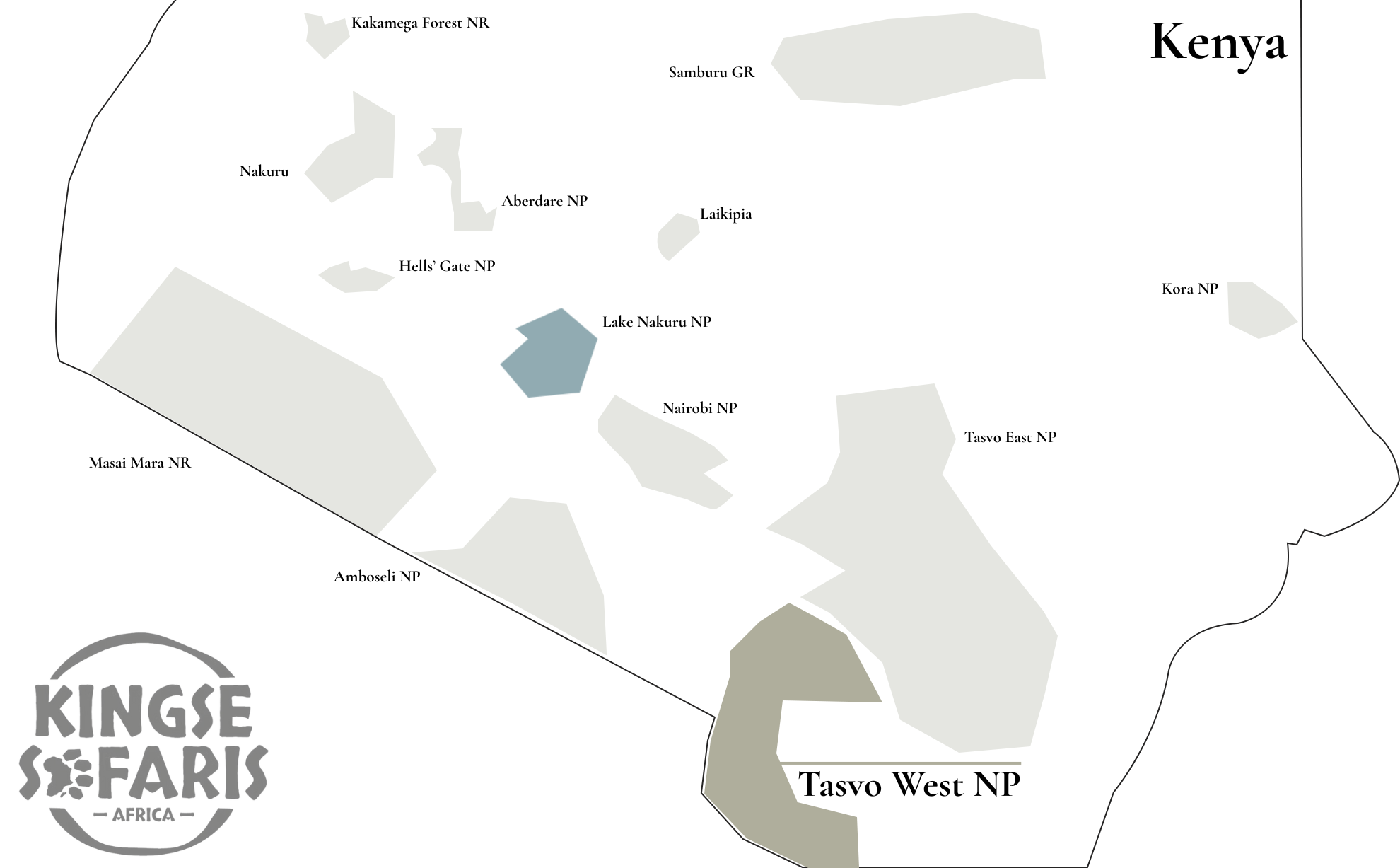
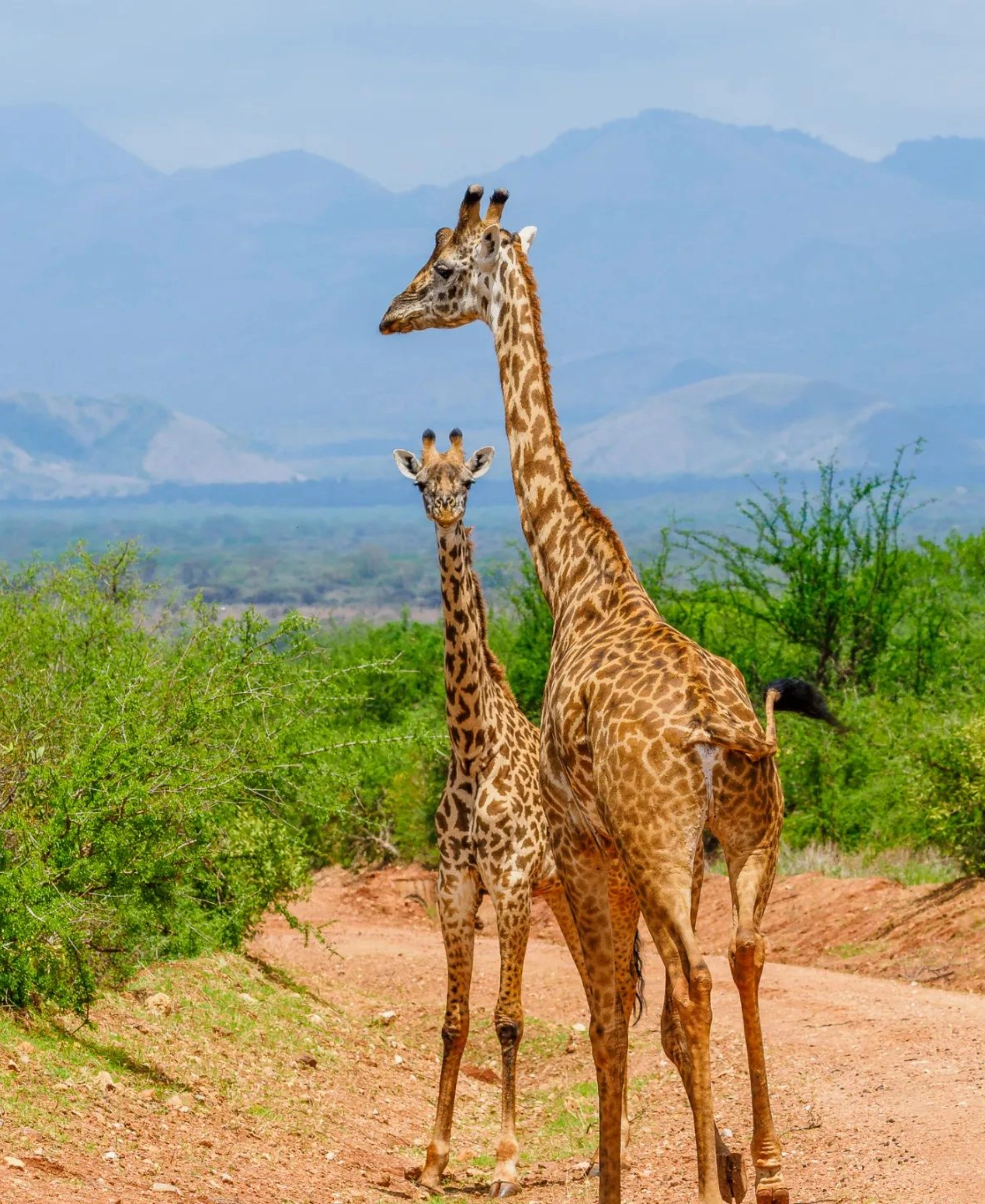
Best Time to Visit Tsavo West
The best time to visit Tsavo West is from June to October and January to February, when dry conditions offer excellent wildlife viewing opportunities and minimal rainfall for smooth, enjoyable game drives.
Best Time
June to October
High Season
July to October
Low Season
April to June
Best Weather
January to February
Discover East Africa's Best Safari Packages
7 Days Tanzania Safari
5 Days Rwanda Safari
7 Days Kenya Safari
7 Days Uganda Safari
Best Reasons to Visit Kenya’s Tsavo West .
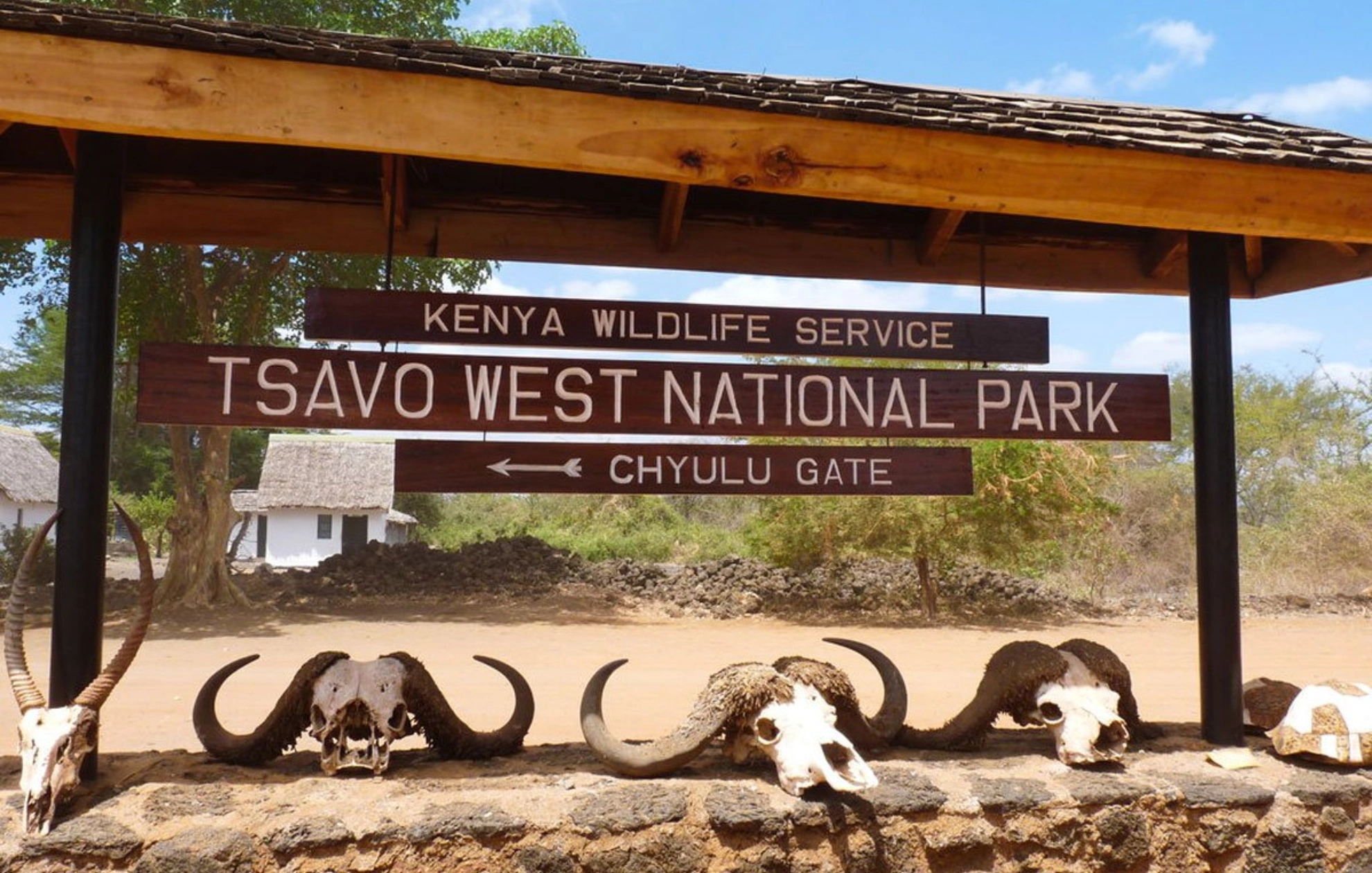
The Chyulu Hills rise above the plains, offering views across the park and sheltering unique plants and animals. Their volcanic history has left behind dramatic features that add character to the scenery.
Visitors can look forward to seeing elephants, lions, leopards, and hundreds of bird species. With its mix of wildlife, geology, and natural beauty, Tsavo West is a destination that gives travellers a true taste of wild Kenya.
Tsavo West National Park is full of striking landscapes that stretch from open savannahs to ancient lava fields. Its wide variety of habitats makes every safari drive different.
Mzima Springs is one of the park’s highlights, with crystal-clear waters that support hippos, crocodiles, and many bird species. Fed by underground streams from the Chyulu Hills, this oasis is a refreshing stop in the wilderness.
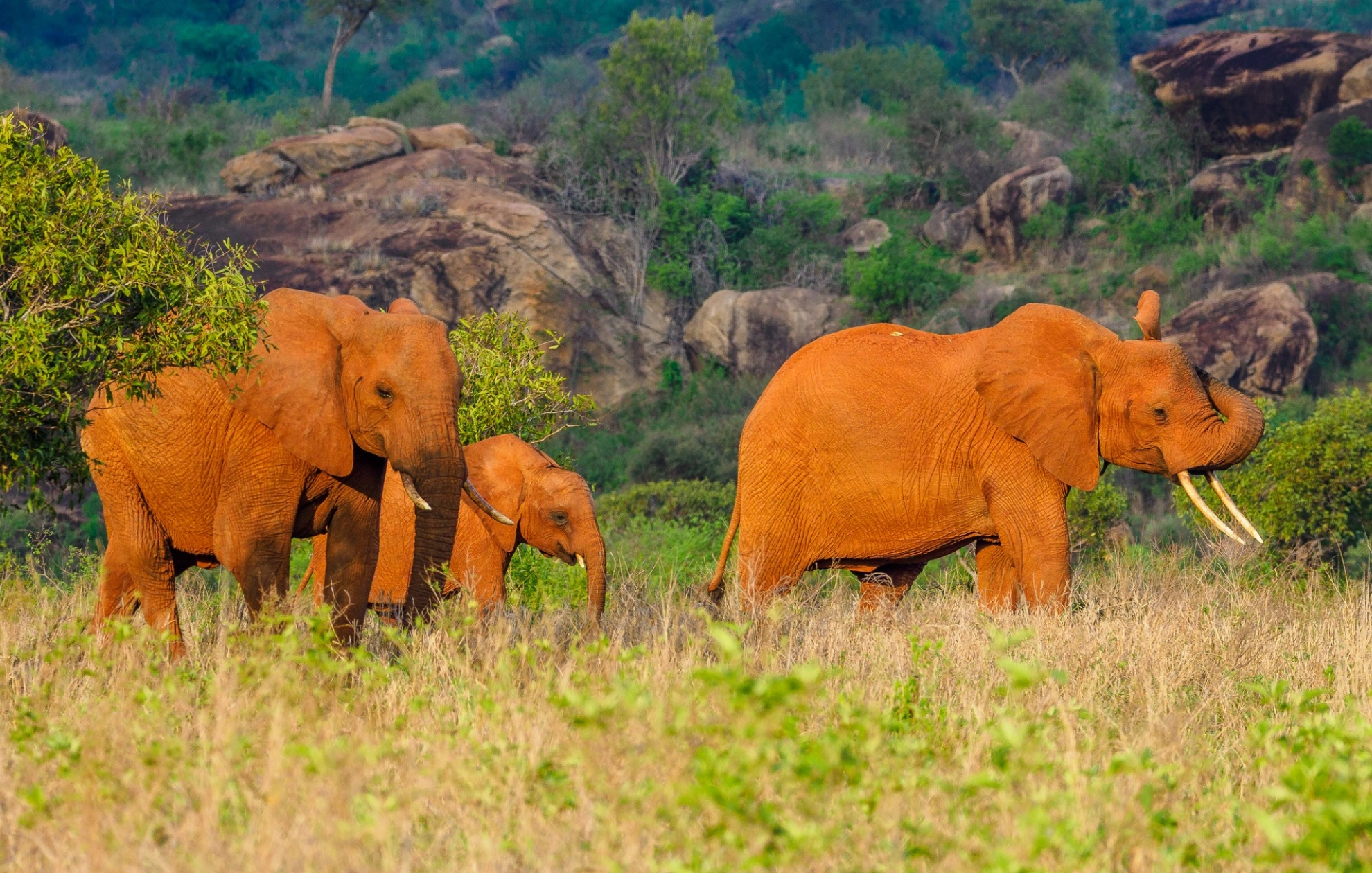
Top 10 FAQs to help you plan your unforgettable safari in Kenya.
Kenya is a captivating destination, famous for thrilling safaris, diverse wildlife, stunning landscapes, and rich culture. These FAQs answer the most common traveler questions to help you plan with confidence.
When is the best time for a safari in Kenya?
The Best time for a Safari in Kenya is from June to October, when the weather is dry and animals concentrate around rivers and waterholes, making them easier to see.
January and February are also great months to visit because the weather is mild and the parks aren’t as busy.
The months of March to May and November are the rainy months. The scenery is lush and gorgeous, but severe rains can make some trails muddy and make it tougher to see animals.
But birdwatchers might like the rainy months better because that’s when migratory species show up.
How much does a safari in Kenya cost?
Kenya offers safaris for every budget. A budget safari may start at around $150 per person per day, covering basic accommodations and game drives.
Mid-range options average $300–$500 per day, offering comfortable lodges or tented camps and more personalized service.
Luxury safaris can cost anywhere from $1,000–$2,000+ per day, featuring exclusive camps, gourmet dining, and private guides. Costs also depend on park fees, transport (road vs. flight), and the season of travel.
Is the Masai Mara worth visiting?
Yes, without question. The Masai Mara is Kenya’s crown jewel and one of the world’s most famous safari destinations. It is best known for the Great Wildebeest Migration (July–October), where over a million animals cross from the Serengeti into Kenya.
Even outside migration season, the Mara offers year-round predator action with lions, leopards, cheetahs, and hyenas, alongside elephants, giraffes, and zebras. Its vast open plains make game viewing exceptional.
How many days are recommended for a safari in Kenya?
A safari can be enjoyed in 3–4 days if you’re short on time, focusing on one park like the Masai Mara.
However, for a deeper experience, 7–10 days allows you to combine several destinations, like Amboseli for elephants with Mount Kilimanjaro views, Lake Naivasha for birdlife, and Tsavo or Samburu for unique landscapes.
This way, you experience Kenya’s diverse ecosystems rather than just one.
Which is better: Kenya or Tanzania for safari?
Both are outstanding safari destinations. Kenya is more compact, making it easier to see multiple parks in a shorter time. It’s often considered more budget-friendly and is famous for the Masai Mara.
Tanzania, on the other hand, offers vast, less crowded wildernesses, including the Serengeti and Ngorongoro Crater.
Many travelers choose to visit both countries, as the Serengeti and Masai Mara are part of the same ecosystem, providing a seamless safari adventure.
Do I need malaria tablets for a Kenya safari?
Yes, malaria is present in many regions of Kenya. It is strongly recommended that travelers take antimalarial medication, which a healthcare professional should prescribe before departure.
In addition, use insect repellent, wear long sleeves and pants in the evenings, and sleep under mosquito nets provided by lodges or camps. With the proper precautions, the risk is manageable.
What should I wear on safari in Kenya?
Bring clothes that are light, breathable, and in neutral colours like khaki, beige, or olive green. These colours help you blend in with your surroundings and don’t draw bugs.
Avoid bright colours, as well as dark colours (black and blue attract tsetse flies). Bring a hat with a wide brim, sunglasses, and a thick layer for early morning or evening journeys because the temperature might drop quickly. For game drives, you should wear comfortable, closed shoes. For walking safaris, you must wear the appropriate attire.
Why are safaris in Kenya expensive?
Safari costs include more than just accommodation. Park entry fees and conservation charges go directly into protecting wildlife and their habitats. Lodges and camps are often located in remote areas, meaning food, supplies, and staff must be brought in, raising operational costs.
Additionally, highly trained guides, trackers, and conservation staff ensure your experience is safe, ethical, and educational. In short, the price supports both your adventure and the preservation of Africa’s wildlife.
How far in advance should I book my safari?
For popular destinations like the Masai Mara during migration season, it’s best to book 6–12 months in advance. This ensures access to the best lodges, guides, and vehicles.
For shoulder or low seasons, you may find availability closer to your dates, but planning gives you more flexibility with itineraries, flight options, and package pricing.
Is Kenya safe for safari travelers?
Yes, Kenya is considered safe for safari tourists. National parks and reserves are secure, and lodges prioritize guest safety with professional guides and staff.
Nairobi and other cities have areas where extra caution is advisable, but once on safari, most visitors feel entirely safe. Following basic travel guidelines, such as avoiding displaying valuables and listening to your guide’s instructions, ensures a smooth and enjoyable trip.
Experience crystal springs and wild plains in perfect harmony.
Guided Game Drives
Mzima Springs
Hiking Adventures
Birdwatching Safari
Kenya Travel Treasures
Discover the Many Sides of Wild Kenya
From lush highlands to arid northern plains, Kenya offers adventures as diverse as its landscapes. Kingse Safaris Africa connects you to unique wildlife encounters, cultural journeys, and breathtaking scenery across this incredible safari nation.
Creating Your Dream Safari, The Way You Want it
Kingse Safaris Africa offers customized tours tailored to your needs. Everything about your trip can be altered to suit your travel style, from the activities to the schedule. Join us and design your dream journey with us!
